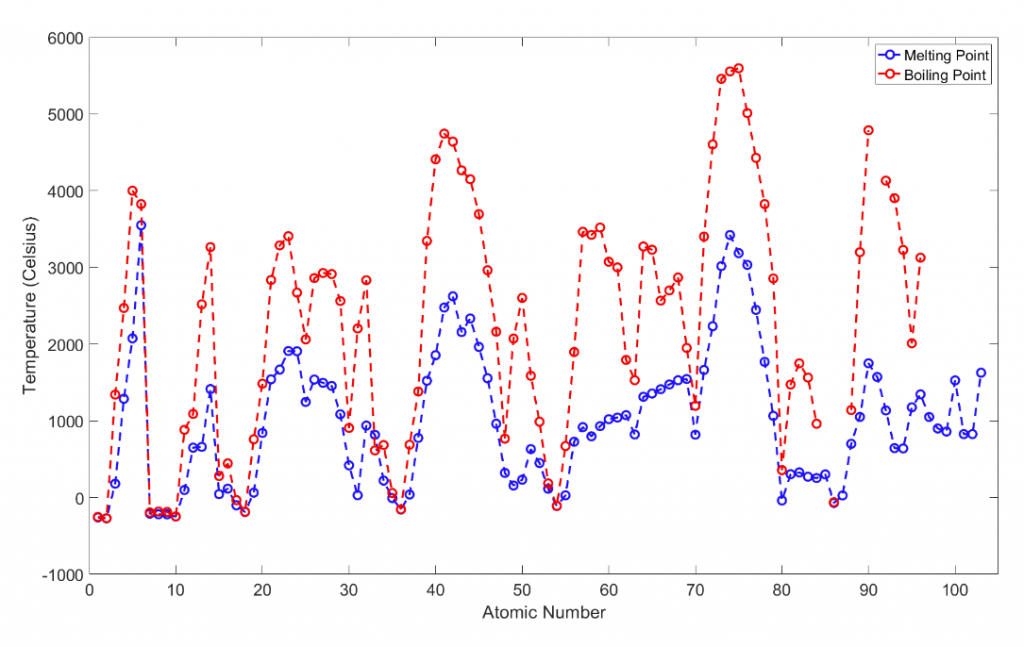2019 marks the 150th anniversary of the Periodic Table. The United Nations General Assembly and UNESCO have proclaimed 2019 as the International Year of the Periodic Table of Chemical Elements (#IYPT2019). There are many activities, projects, and celebrations planned this year promoting the Periodic Table of Elements listed on the IYPT2019 website:
You may also be interested in reading some of our print and electronic books related to the Periodic Table: Scout Search for TI(periodic table).
At Rodgers Library, we have been interested in interacting with machine-readable periodic table data. As such, we were excited to learn that the U.S. National Library of Medicine recently released an interactive PubChem Periodic Table of Elements that allows both human and machine access to the underlying data. For example, here is a variety of associated element property data in machine-readable JSON format from the PubChem Periodic Table of Elements:
https://pubchem.ncbi.nlm.nih.gov/rest/pug/periodictable/JSON
JSON data can be processed using scientific software and/or programming languages. We have created an example tutorial using MATLAB code. In the tutorial, we download the PubChem machine-readable periodic table JSON data and assemble a table of element names and corresponding International Chemical Identifiers (InChIs). We then create plots of Melting Point/Boiling Point vs. Atomic Number. Check out the MATLAB Live Notebook below, you are free to use and adapt the code as desired:

Enjoy, and have fun with the Periodic Table of the Elements!